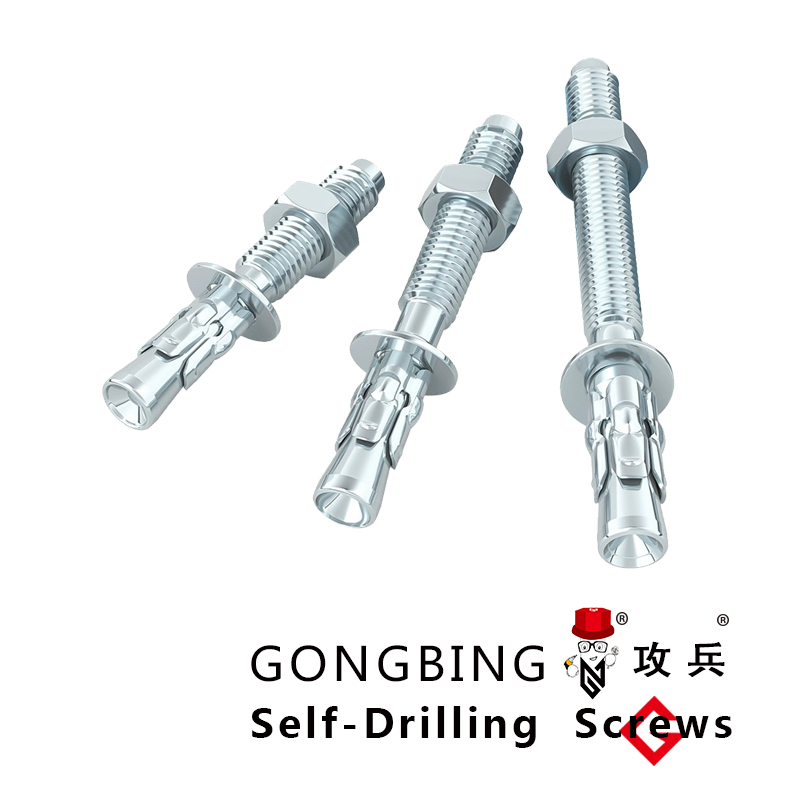Durable Expansion Anchor Bolts for Concrete Applications in Construction and Repair
The Role of Concrete Expansion Anchor Bolts in Construction
Concrete expansion anchor bolts are critical components in modern construction, playing an essential role in securing various structures and ensuring their stability. These bolts are designed to withstand significant loads and resist pull-out forces, making them ideal for a wide range of applications, from anchoring machinery to attaching structural elements. Understanding their functionality and proper usage can greatly enhance the safety and durability of building projects.
What Are Concrete Expansion Anchor Bolts?
Concrete expansion anchor bolts are heavy-duty fasteners that are embedded into concrete and utilize an expansion mechanism to create a strong hold. Typically made from high-strength steel, these bolts come in various sizes and designs, including wedge anchors, sleeve anchors, and drop-in anchors, each suitable for different types of applications and load requirements.
The basic principle behind an expansion anchor bolt involves inserting the bolt into a pre-drilled hole within the concrete. Once the bolt is positioned, a specific action—be it tightening a nut or hammering a sleeve—causes the bolt to expand against the concrete walls, creating a secure grip that prevents the bolt from pulling free under tension or shear forces.
Advantages of Using Expansion Anchor Bolts
One of the notable advantages of concrete expansion anchor bolts is their ability to provide a reliable anchoring solution with minimal installation time and effort. Unlike other fastening methods that may require specialized skills, the installation of expansion anchors can easily be performed by construction workers with basic training.
Additionally, these bolts are highly effective in high-load applications. Their design allows them to distribute loads evenly across the surrounding concrete, reducing the risk of concrete failure. This characteristic is particularly beneficial in heavy industrial settings, where equipment and machinery may generate substantial forces.
Furthermore, concrete expansion anchor bolts are resistant to environmental factors when treated with protective coatings such as zinc plating or hot-dip galvanizing, ensuring longevity and performance in various weather conditions. This makes them suitable for both indoor and outdoor applications.
Applications of Concrete Expansion Anchor Bolts
concrete expansion anchor bolts

Concrete expansion anchor bolts are widely used in several construction scenarios
. Common applications include- Structural Support Used in beam-to-column connections, these bolts secure structural elements and ensure they can bear the intended loads without shifting or failing. - Machinery and Equipment Mounting Factories and warehouses often use expansion anchors to secure heavy machinery to concrete floors, preventing vibrations and movements that could disrupt operations. - Architectural Features In architectural applications, these bolts can anchor railings, benches, and other fixtures to concrete surfaces, enhancing both safety and aesthetics.
Installation Considerations
While the installation of concrete expansion anchor bolts is relatively straightforward, there are several considerations to keep in mind
1. Correct Sizing It is crucial to select the correct size and type of anchor based on the load requirements and the installation environment.
2. Drilling Precise Holes Accurate drilling of the holes is vital for achieving optimal anchor performance. Misalignment can lead to reduced load capacity and compromised safety.
3. Adhering to Manufacturer Guidelines Following the manufacturer's specifications regarding torque settings and installation procedures ensures the effectiveness of the anchors.
4. Regular Inspections Conducting regular inspections for signs of corrosion or loosening can prevent potential failures over time.
Conclusion
Concrete expansion anchor bolts are indispensable in the construction industry, offering robust solutions for securing various structures and equipment. Their ease of use, combined with their high load-bearing capacity and durability, makes them a preferred choice for many applications. By understanding their functionality and adhering to best practices for installation, construction professionals can ensure the safety and longevity of their projects.
-
Weatherproof Plastic Expansion Anchors for OutdoorNewsJun.06,2025
-
Sustainability in the Supply Chain: Eco-Friendly TEK Screws ProductionNewsJun.06,2025
-
Load-Bearing Capacity of External Insulation FixingsNewsJun.06,2025
-
Double Head Bolts: Enhancing Efficiency in Industrial MachineryNewsJun.06,2025
-
Corrosion Resistance in Chipboard Screws: Coatings for Wholesale DurabilityNewsJun.06,2025
-
Butterfly Toggle Bolts : Enhancing Structural ResilienceNewsJun.06,2025
